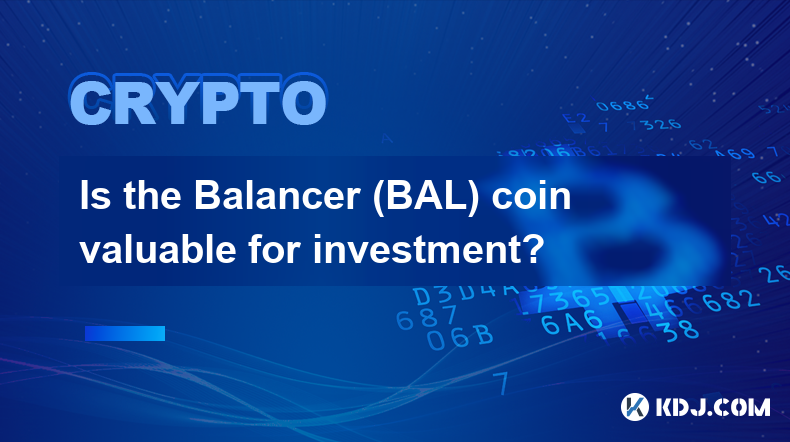-
 Bitcoin
Bitcoin $99,325.5277
2.48% -
 Ethereum
Ethereum $1,957.8293
7.06% -
 Tether USDt
Tether USDt $1.0005
0.00% -
 XRP
XRP $2.2082
3.46% -
 BNB
BNB $613.9617
0.95% -
 Solana
Solana $154.9743
5.46% -
 USDC
USDC $1.0000
-0.02% -
 Dogecoin
Dogecoin $0.1835
6.34% -
 Cardano
Cardano $0.7226
6.47% -
 TRON
TRON $0.2504
1.28% -
 Sui
Sui $3.7938
12.50% -
 Chainlink
Chainlink $14.9023
8.13% -
 Avalanche
Avalanche $20.9246
6.79% -
 Stellar
Stellar $0.2746
5.20% -
 Bitcoin Cash
Bitcoin Cash $410.3986
12.53% -
 UNUS SED LEO
UNUS SED LEO $8.8086
1.42% -
 Shiba Inu
Shiba Inu $0.0...01346
5.17% -
 Hedera
Hedera $0.1859
5.60% -
 Toncoin
Toncoin $3.1244
3.81% -
 Hyperliquid
Hyperliquid $21.5713
2.02% -
 Litecoin
Litecoin $91.6127
1.28% -
 Polkadot
Polkadot $4.2356
7.07% -
 Monero
Monero $293.3889
3.42% -
 Dai
Dai $1.0001
-0.02% -
 Bitget Token
Bitget Token $4.3248
0.45% -
 Ethena USDe
Ethena USDe $1.0004
0.00% -
 Pi
Pi $0.6220
6.61% -
 Pepe
Pepe $0.0...09218
13.47% -
 Bittensor
Bittensor $398.3299
9.28% -
 Uniswap
Uniswap $5.2179
8.02%
Is the Balancer (BAL) coin valuable for investment?
Balancer's (BAL) potential value as an investment lies in its strong market demand, consistent protocol growth, decentralized governance, and distinctive competitive features within the crowded DEX landscape.
Dec 08, 2024 at 06:38 pm

Is the Balancer (BAL) Coin Valuable for Investment?
Understanding Balancer (BAL)
- Balancer (BAL) is a decentralized exchange (DEX) protocol built on the Ethereum blockchain.
- It enables users to trade cryptocurrencies in a non-custodial manner, meaning they retain control over their funds at all times.
- Balancer employs an innovative "smart pool" system that automatically balances liquidity across different assets, enhancing capital efficiency and reducing price volatility.
- The BAL token is the governance token of the Balancer ecosystem and provides holders with voting rights on protocol upgrades and development proposals.
Factors to Consider When Evaluating BAL for Investment
1. Market Demand and Adoption:
- Balancer has gained significant traction within the DEX space, ranking among the top 10 DEXs by trading volume.
- Its unique pool system and competitive fees have attracted a growing user base, indicating strong market demand.
- The adoption of Balancer by major crypto exchanges and wallets further enhances its credibility and accessibility.
2. Protocol Revenue and Growth:
- Balancer generates revenue through trading fees and the provision of liquidity on its DEX.
- The protocol has experienced consistent growth in revenue and liquidity over time, showcasing its ability to capture market share and expand its operations.
- The continued development and adoption of new features and integrations are expected to drive further growth in revenue and user engagement.
3. Tokenomics and Distribution:
- The BAL token has a limited supply of 100 million tokens, ensuring its scarcity and potential for value appreciation.
- Approximately 60% of the BAL supply is held by community members, indicating a decentralized and participatory governance model.
- The distribution and allocation of BAL tokens encourage long-term holding and participation in the ecosystem's growth.
4. Team and Community Support:
- Balancer is backed by a team of experienced blockchain engineers and financial professionals with a proven track record in the industry.
- The team's commitment to transparency, innovation, and community engagement fosters trust and confidence in the project's long-term prospects.
- The strong and supportive community contributes to the development, promotion, and governance of the Balancer ecosystem.
5. Competitive Landscape:
- Balancer faces competition from other popular DEXs such as Uniswap, Curve, and Sushiswap.
- Each DEX has its own unique strengths and weaknesses, and the competitive landscape is constantly evolving.
- Balancer's distinctive features, such as smart pools and customizable liquidity provision, help it differentiate itself in the crowded DEX market.
6. Risk Factors:
- The cryptocurrency market is highly volatile, and Balancer's revenue and token value can be impacted by market fluctuations.
- Smart contracts, which underpin the Balancer protocol, are vulnerable to potential security risks and vulnerabilities.
- Regulatory changes and technological advancements could affect the adoption and usage of Balancer and other DEX platforms.
Conclusion:
The value of the Balancer (BAL) coin for investment depends on a multifaceted evaluation of its market demand, protocol utility, tokenomics, team and community support, competitive landscape, and risk factors.
By carefully considering these factors, investors can make an informed decision about whether BAL aligns with their investment goals and risk tolerance.
Disclaimer:info@kdj.com
The information provided is not trading advice. kdj.com does not assume any responsibility for any investments made based on the information provided in this article. Cryptocurrencies are highly volatile and it is highly recommended that you invest with caution after thorough research!
If you believe that the content used on this website infringes your copyright, please contact us immediately (info@kdj.com) and we will delete it promptly.
- XRP Just Did the Most Textbook Move — and It's Flying Toward This Resistance
- 2025-05-08 20:15:12
- LockBit ransomware gang's dark web affiliate panel was breached, leaking nearly 60,000 Bitcoin addresses
- 2025-05-08 20:15:12
- BNB Could Rise More Than 360% to $2775 by 2028, According to Standard Chartered
- 2025-05-08 20:10:12
- Cardano’s $619M Scandal Centers on Allegations About Unclaimed ADA Moved Without Permission by Hoskinson
- 2025-05-08 20:10:12
- Bitcoin (BTC) Has Recovered Rather Sharply
- 2025-05-08 20:05:12
- PEPE Coin Shows Strong Recovery Signals as Whale Accumulation and Technical Patterns Point to a Potential Breakout
- 2025-05-08 20:05:12
Related knowledge

Is Ethereum smart contract call fee high? How to optimize costs?
May 08,2025 at 09:35am
Is Ethereum Smart Contract Call Fee High? How to Optimize Costs? The world of Ethereum smart contracts has revolutionized the way we think about decentralized applications and blockchain technology. However, one of the most frequently discussed topics within this realm is the cost associated with executing smart contract calls. In this article, we will ...

Is Ethereum Layer2 fee low? How to use it cheaper?
May 08,2025 at 03:56am
The question of whether Ethereum Layer 2 solutions offer lower fees and how to use them more economically is a topic of great interest within the cryptocurrency community. Ethereum's Layer 2 solutions have been developed to address the high transaction fees and scalability issues associated with the main Ethereum network. In this article, we will delve ...

How to calculate Ethereum network fee? How to reduce transaction costs?
May 08,2025 at 02:15am
Understanding and managing Ethereum network fees is crucial for anyone involved in transactions on the Ethereum blockchain. The network fee, also known as gas fee, is the amount of Ether (ETH) required to successfully conduct a transaction or execute a smart contract on the Ethereum network. Calculating these fees and finding ways to reduce them can sig...

What is Ethereum Gas Fee? How to optimize Gas Fee to save costs?
May 08,2025 at 03:43am
Ethereum gas fees are a crucial aspect of interacting with the Ethereum blockchain. Understanding and optimizing these fees can significantly impact the cost-effectiveness of transactions and smart contract interactions. In this article, we will delve into what Ethereum gas fees are, how they are calculated, and provide detailed strategies for optimizin...

How to perform MOVE cross-chain transfer? What to do if the gas fee is too high?
May 07,2025 at 08:03pm
Introduction to MOVE Cross-Chain TransferCross-chain transfers have become an essential part of the cryptocurrency ecosystem, allowing users to move assets between different blockchain networks. One of the popular protocols for achieving this is the MOVE cross-chain transfer. This article will guide you through the process of performing a MOVE cross-cha...

How is the DYDX liquidation price calculated? How is the forced liquidation mechanism?
May 08,2025 at 06:49am
The DYDX liquidation price and the forced liquidation mechanism are crucial aspects of trading on the dYdX platform, a decentralized exchange that allows users to trade perpetual contracts. Understanding these concepts is essential for managing risk and maximizing potential returns. In this article, we will delve into the details of how the DYDX liquida...

Is Ethereum smart contract call fee high? How to optimize costs?
May 08,2025 at 09:35am
Is Ethereum Smart Contract Call Fee High? How to Optimize Costs? The world of Ethereum smart contracts has revolutionized the way we think about decentralized applications and blockchain technology. However, one of the most frequently discussed topics within this realm is the cost associated with executing smart contract calls. In this article, we will ...

Is Ethereum Layer2 fee low? How to use it cheaper?
May 08,2025 at 03:56am
The question of whether Ethereum Layer 2 solutions offer lower fees and how to use them more economically is a topic of great interest within the cryptocurrency community. Ethereum's Layer 2 solutions have been developed to address the high transaction fees and scalability issues associated with the main Ethereum network. In this article, we will delve ...

How to calculate Ethereum network fee? How to reduce transaction costs?
May 08,2025 at 02:15am
Understanding and managing Ethereum network fees is crucial for anyone involved in transactions on the Ethereum blockchain. The network fee, also known as gas fee, is the amount of Ether (ETH) required to successfully conduct a transaction or execute a smart contract on the Ethereum network. Calculating these fees and finding ways to reduce them can sig...

What is Ethereum Gas Fee? How to optimize Gas Fee to save costs?
May 08,2025 at 03:43am
Ethereum gas fees are a crucial aspect of interacting with the Ethereum blockchain. Understanding and optimizing these fees can significantly impact the cost-effectiveness of transactions and smart contract interactions. In this article, we will delve into what Ethereum gas fees are, how they are calculated, and provide detailed strategies for optimizin...

How to perform MOVE cross-chain transfer? What to do if the gas fee is too high?
May 07,2025 at 08:03pm
Introduction to MOVE Cross-Chain TransferCross-chain transfers have become an essential part of the cryptocurrency ecosystem, allowing users to move assets between different blockchain networks. One of the popular protocols for achieving this is the MOVE cross-chain transfer. This article will guide you through the process of performing a MOVE cross-cha...

How is the DYDX liquidation price calculated? How is the forced liquidation mechanism?
May 08,2025 at 06:49am
The DYDX liquidation price and the forced liquidation mechanism are crucial aspects of trading on the dYdX platform, a decentralized exchange that allows users to trade perpetual contracts. Understanding these concepts is essential for managing risk and maximizing potential returns. In this article, we will delve into the details of how the DYDX liquida...
See all articles
























![[2025.05.08] The two routes of Bitcoin continue to be observed, and gold is still bullish. [2025.05.08] The two routes of Bitcoin continue to be observed, and gold is still bullish.](/uploads/2025/05/08/cryptocurrencies-news/videos/routes-bitcoin-continue-observed-gold-bullish/image_500_375.webp)



























































